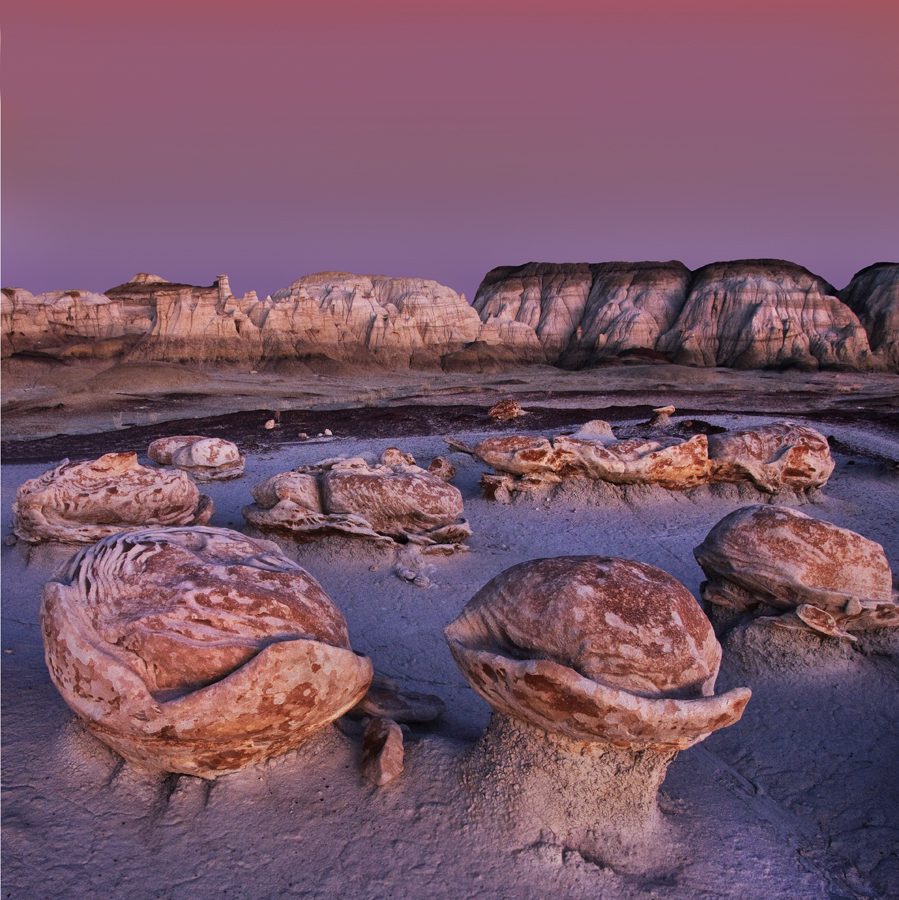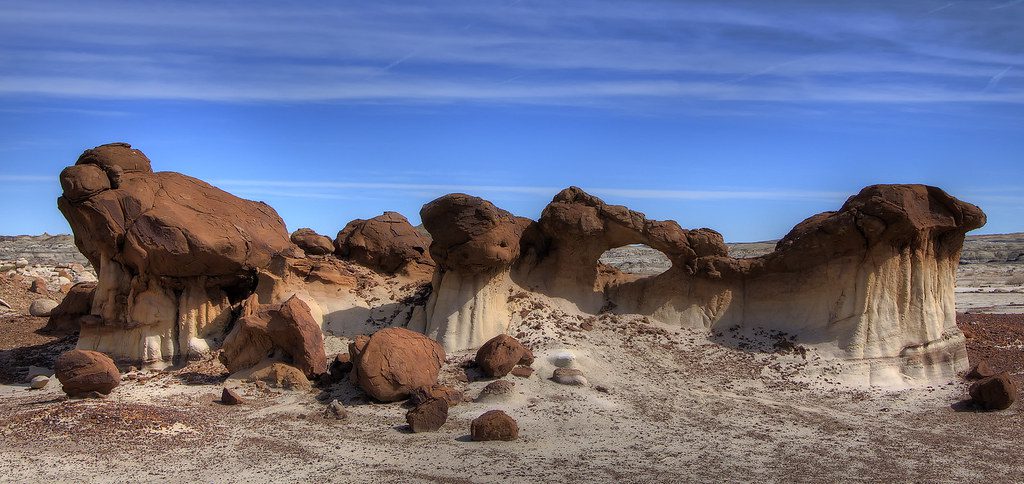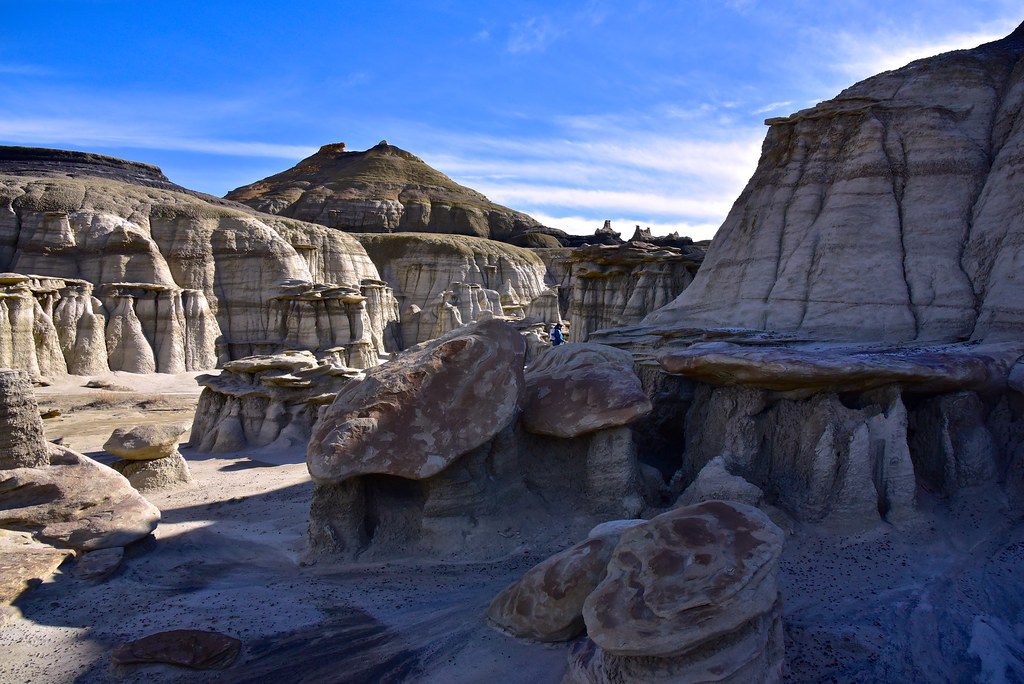The Bisti Badlands, also called Bisti/De-Na-Zin Wilderness, is a vast rolling landscape of phantasmagoric formations of earth and stone located in northwestern New Mexico’s high desert lands. Wind and water erosion over a long time have carved a fantasy world of strange rock formations and hoodoos here in the form of pinnacles, spires, mushrooms and other unusual forms that have attracted names such as “Cracked Eggs”, “Bisti Wings” and “Rock Garden”.
Bisti is derived from the Navajo word “Bistahi” which means “among the adobe formations.” De-Na-Zin takes its name from another Navajo word for “cranes.” This little visited and largely unknown area was once an ancient riverine delta on the shores of an ancient sea, 70 million years ago. As the water slowly receded, a lush foliage grew along the many riverbanks and many prehistoric animals roamed the region.

When the water disappeared totally, it left behind layers of jumbled sandstone, mudstone, shale and coal. Much of the coal burned away in ancient fires that lasted centuries. Erosion then shaped the characteristic features of the modern landscape of the Bisti Wilderness. Six thousand years ago, when the last ice age receded, the waters of the melting glaciers helped expose fossils and petrified wood, as well as eroding the rock into the hoodoos now visible.
Mainly three kinds of formations are exposed in Bisti Wilderness area — the Ojo Alamo Formation, which has left bare the thick deposit of volcanic ash from an ancient eruption, and below that the Fruitland formation and the Kirtland Shale.

The Ojo Alamo Formation spans the Mesozoic/Cenozoic boundary, and mostly contain dinosaur fossils. The Fruitland Formation contains layers of sandstone, shale, and coal, and was laid down when the conditions were marshy, warm and humid, with poor drainage. The Fruitland Formation is found primarily on the western side of the Wilderness. The Kirtland Shale is the product of alluvial muds and overbank sand deposits from the many channels draining the coastal plain in the late Cretaceous period. It overlies the Fruitland Formation, and is exposed on the eastern side of the badlands. Many of the gray hoodoos in the wilderness are made up of this formation.
The unique egg-shaped formation, in the “egg factory” area, are also the result of erosion. The cracks are the result of differential weathering, while the speckled appearance due to mineral deposits in the stream that cut through the sedimentary rock.
According to atlasobscura.com; amusingplanet.com. Source of photos: internet








